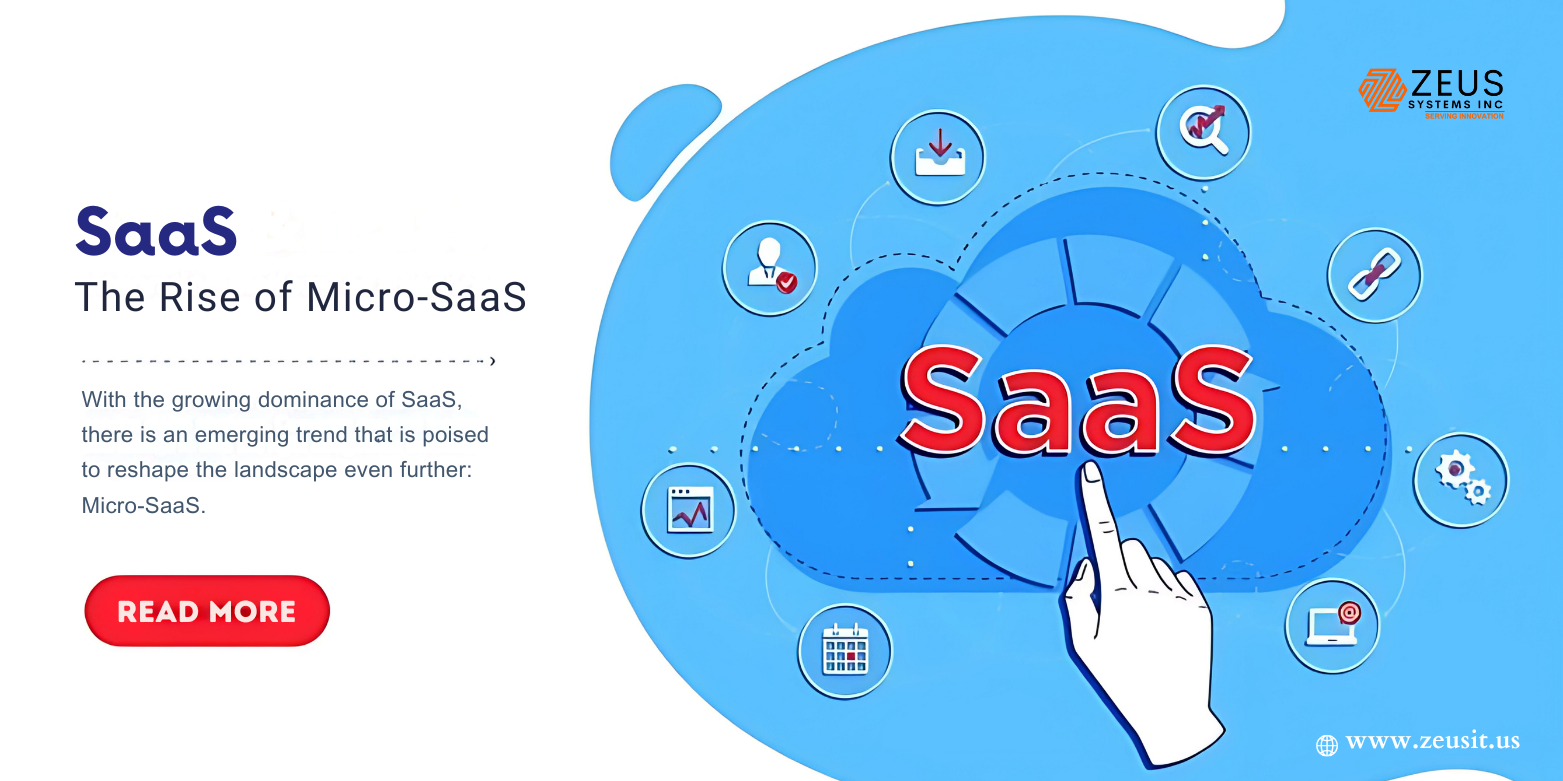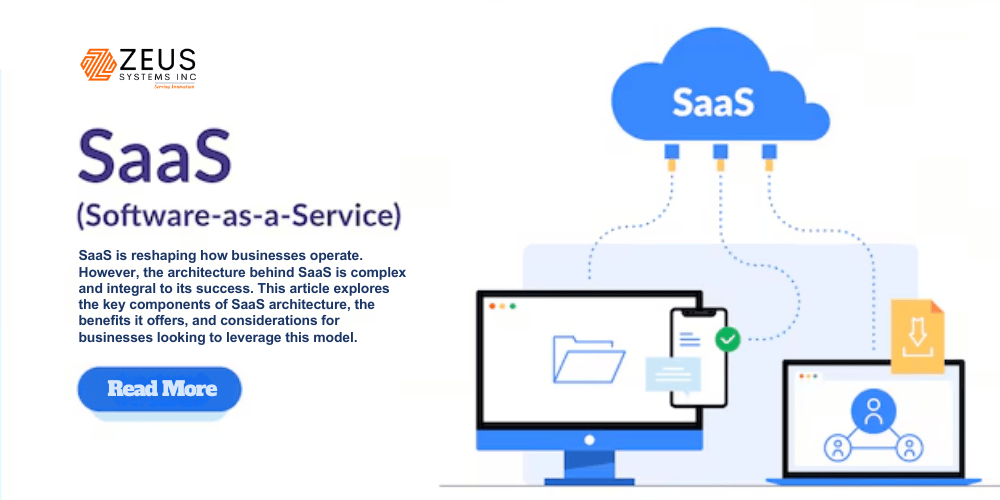Software as a Service (SaaS) has been one of the most transformative developments in the tech industry over the past decade. The shift from traditional on-premise software to cloud-based, subscription-driven services has revolutionized how businesses operate, collaborate, and scale. With the growing dominance of SaaS, there is an emerging trend that is poised to reshape the landscape even further: Micro-SaaS.
Micro-SaaS refers to small, highly specialized SaaS products that typically serve niche markets and require fewer resources to build, maintain, and scale. Unlike traditional SaaS companies, which often focus on large-scale, broad-market solutions, Micro-SaaS businesses target specific problems within smaller user bases, offering highly customized and cost-effective solutions.
As the SaaS industry continues to evolve, the rise of Micro-SaaS presents significant opportunities for developers, entrepreneurs, and businesses alike. In this article, we will explore the growth of Micro-SaaS, its key characteristics, how it differs from traditional SaaS, and the benefits it offers both creators and users. We will also predict how this trend will shape the future of the SaaS industry and provide insights for companies looking to capitalize on this growing movement.
Chapter 1: The Evolution of SaaS and the Rise of Micro-SaaS
The Growth of the SaaS Model
The SaaS business model has grown rapidly since its inception. Traditional software sales models were based on one-time licensing or perpetual licenses, with maintenance and updates often requiring expensive, time-consuming manual processes. With SaaS, the subscription model replaced these outdated practices, offering software on-demand via the cloud. This made it more accessible, scalable, and cost-effective for businesses of all sizes.
From large enterprises using solutions like Salesforce, Microsoft 365, and Amazon Web Services (AWS), SaaS expanded across almost every industry. SaaS has allowed businesses to scale without the need for in-house infrastructure, offering seamless updates, increased flexibility, and better cost control. This led to a massive market for SaaS providers, ranging from giants like Google and Adobe to a slew of smaller specialized services.
What is Micro-SaaS?
Micro-SaaS is a subset of the SaaS industry that focuses on building small-scale, specialized solutions designed to meet the needs of very specific user groups. These products are typically operated by small teams or solo founders, which makes them much more agile and cost-efficient compared to traditional SaaS.
Unlike traditional SaaS products, which often serve broad customer segments (e.g., project management, CRM, enterprise resource planning), Micro-SaaS targets niche markets with very specific needs. These products often require minimal ongoing maintenance and support, reducing overhead costs and complexity.
Examples of Micro-SaaS products might include tools that cater to specific industries like real estate, education, or healthcare or solutions that address micro-functions within larger systems, such as a social media analytics tool for a single platform or a niche inventory management system for local stores.
Chapter 2: Key Characteristics of Micro-SaaS
Niche Focus
One of the defining features of Micro-SaaS is its focus on solving a very specific problem for a narrow user base. This niche focus often means that the software is highly tailored to the needs of its users, providing them with an unparalleled level of customization and functionality. For example, a Micro-SaaS product might be a custom tool designed specifically for managing inventory in a small bakery, offering features that wouldn’t be found in a larger, more generalized system.
Low Overhead and Low Operational Costs
Because Micro-SaaS businesses typically have small teams (or are run by solo entrepreneurs), they operate with low overhead costs. These companies do not require large infrastructure investments or a broad marketing team. Many Micro-SaaS products are developed and maintained by a single person or a small team, often with the help of contractors or automated systems. This reduces operational costs and allows creators to build products that are highly efficient and profitable even with a small user base.
Scalability with Minimal Resources
Micro-SaaS businesses are inherently scalable. Unlike traditional SaaS products, which often require substantial infrastructure and team expansion to scale, Micro-SaaS products can often be scaled by simply adding more users or automating certain processes. Because these products are cloud-based, the infrastructure and support systems are already in place, and expansion can often be achieved with minimal additional investment.
Subscription-Based Revenue Models
Like traditional SaaS, Micro-SaaS products typically rely on subscription-based pricing. This model offers consistent, recurring revenue, which is beneficial for both the business and the customers. For businesses, it ensures a predictable cash flow, while for users, it offers flexibility with low upfront costs.
However, Micro-SaaS businesses often operate at a much smaller scale, meaning their subscription fees may be lower, but they can still generate significant income through a large volume of users or high-value, niche markets.
Low Customer Acquisition Costs (CAC)
Due to their niche focus and specialized offerings, Micro-SaaS businesses tend to have lower customer acquisition costs. These products often rely on organic growth, word-of-mouth referrals, and targeted content marketing. Instead of spending large sums on paid advertising, these businesses can focus on creating content that resonates with their niche audience and building a community around their product.
Chapter 3: Advantages of Micro-SaaS for Entrepreneurs and Businesses
Opportunities for Solo Entrepreneurs and Small Teams
Micro-SaaS offers significant opportunities for solo entrepreneurs and small teams to enter the SaaS market without the need for large-scale infrastructure or a massive development team. Because of the low barriers to entry, many Micro-SaaS products are built and launched by individual developers, making this an ideal model for aspiring SaaS entrepreneurs.
The scalability of Micro-SaaS also makes it attractive to small teams, who can gradually expand their offerings while maintaining control over product development and customer relationships.
Increased Customer Loyalty and Retention
Due to their highly focused nature, Micro-SaaS products tend to create highly loyal customer bases. Because these products solve a very specific problem, users are more likely to stick with them, and churn rates tend to be lower. Additionally, since Micro-SaaS businesses often have close relationships with their customers, they can quickly adapt to feedback and make improvements to meet evolving needs.
Faster Time to Market
Micro-SaaS products can often be developed and launched more quickly than traditional SaaS products. Because they are smaller in scope and focus on niche problems, development timelines are typically shorter. This allows entrepreneurs to launch their products faster, test the market, and iterate quickly.
Global Reach with Minimal Investment
The cloud-based nature of Micro-SaaS products means they can be marketed and sold globally with minimal investment. The ability to offer a product to users from different regions without needing a physical presence reduces the complexity and costs associated with global expansion.
Chapter 4: The Role of Automation and AI in Micro-SaaS
How Automation Enhances Micro-SaaS
Automation plays a critical role in the efficiency and scalability of Micro-SaaS businesses. By automating routine tasks such as customer support, billing, marketing, and even product updates, Micro-SaaS businesses can operate with minimal intervention, allowing entrepreneurs to focus on strategic decisions and growth.
For example, AI-driven chatbots can automate customer support, while marketing automation platforms can handle lead generation and nurturing. This reduces the need for large teams and enables Micro-SaaS creators to manage multiple facets of the business with a small team.
AI-Driven Personalization
As Micro-SaaS businesses target specific user needs, AI-driven personalization can play a significant role in delivering customized experiences. Machine learning algorithms can analyze user behavior and adapt the product experience to meet individual preferences, which enhances user engagement and satisfaction.
Chapter 5: The Future of Micro-SaaS in the Broader SaaS Landscape
The Emergence of New Niche Markets
As more businesses and individuals seek specialized solutions for specific problems, the demand for Micro-SaaS products will only increase. The rapid expansion of new industries and niches—such as remote work, health tech, and sustainability—presents countless opportunities for Micro-SaaS businesses to thrive. Entrepreneurs who can identify these niches and deliver highly focused solutions will have a significant competitive advantage.
Integration and Ecosystem Growth
While Micro-SaaS products are often standalone solutions, there is an increasing trend toward integrating these products into broader ecosystems. For example, a Micro-SaaS tool focused on social media analytics might integrate with larger marketing platforms like HubSpot or Salesforce, creating a more seamless experience for users. This integration allows Micro-SaaS businesses to tap into broader markets and add value to other SaaS ecosystems.
Crowded Market and the Need for Differentiation
As the Micro-SaaS market grows, competition will inevitably increase. To stand out, businesses will need to focus on unique value propositions, high-quality user experiences, and effective marketing strategies. Micro-SaaS products that deliver a truly exceptional solution to a well-defined problem will continue to dominate, while those that fail to offer a compelling advantage may struggle.
Chapter 6: How to Start a Micro-SaaS Business
Finding a Niche
The first step in creating a Micro-SaaS product is identifying a niche that is underserved or has specific pain points that are not addressed by larger SaaS solutions. This might involve focusing on a particular industry, business function, or even a specific geographic market.
Building the Product
Once you have identified a niche, the next step is to develop the product. Since Micro-SaaS products are typically small and focused, the development process should be streamlined. The focus should be on creating a minimal viable product (MVP) that solves the core problem, allowing you to iterate based on user feedback.
Marketing and Customer Acquisition
Marketing a Micro-SaaS product requires targeting a highly specific audience. Content marketing, social media, and partnerships with other businesses in the niche can be highly effective in reaching potential customers. Additionally, leveraging existing communities and forums related to the niche can help build trust and generate early adopters.
Conclusion: The Bright Future of Micro-SaaS
The rise of Micro-SaaS marks a significant shift in the SaaS industry, offering new opportunities for entrepreneurs, businesses, and developers alike. As the software world continues to move towards specialization, the demand for highly tailored, scalable, and efficient solutions will only grow. Micro-SaaS offers a promising future for those willing to embrace niche markets, automate processes, and innovate in creative ways.
By focusing on solving specific problems with precision, Micro-SaaS businesses can thrive in an increasingly competitive and dynamic digital ecosystem, making it one of the most exciting trends in the future of SaaS.


